Pâtisserie perfect: ways to show off creative desserts on social media
Pâtisserie, desserts and chocolate are the picture-perfect darlings of social media, and there’s a host of colourful and creative ways to show off what’s new on your menu. Angela Frewin reports
“Beautifully designed, intricate pâtisserie products are having their time in the spotlight as diners opt for indulgent treats as a decadent but good-value sticking plaster to get them through challenging times,” says Laura Bicknell, head of sales at Creed. “These sorts of dishes have strong appeal as they often can’t be replicated at home, and therefore offer the diner something which feels special and a real treat when perhaps they are eating out less often than usual.”
“The versatility of pâtisserie is unmatchable, from éclairs and macarons to filled tartelettes and delicious entremets,” agrees Erwan Inizan, Northern Europe sales director at Brioche Pasquier. As seductive to the eyes as the tastebuds, chocolate and pâtisserie is a kaleidoscopic, cross-fertilising sector that embraces the old, the new, the updated and the hybrid.
And it is one that continues to thrill, as witnessed by current viral sensation the cube croissant, which has generated more than two million views on TikTok since its December launch by Le Deli Robuchon. The London bakery is selling 300 croissants a day to customers prepared to queue for up to 45 minutes for a taste of the £6.95 chocolate, vanilla or matcha and raspberry flavoured cubes.
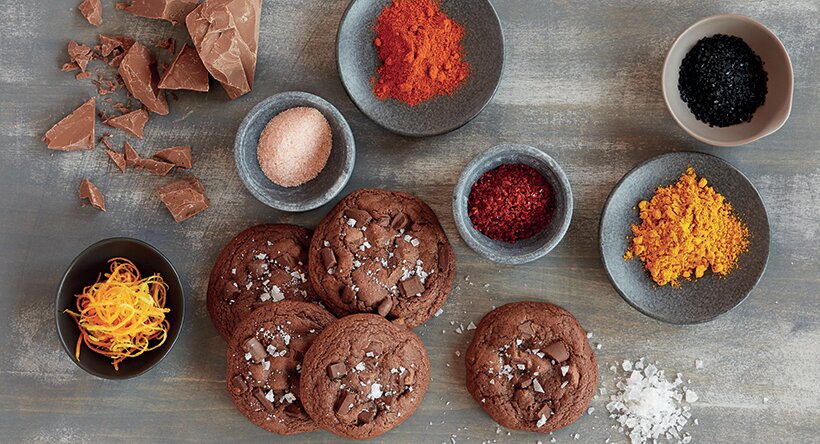
Origin story
The need to balance demand for decadent indulgence with health, nutrition, sustainability and ethical expectations is also spawning a flurry of allergen-free, plant-based and reduced-sugar options, along with increased interest in ingredient provenance. As Dawn student ambassador Kitty Glencross points out: “In the past, Belgian chocolate was the ‘go-to’ product, but as global tastes change, along with a better understanding by consumers about how ingredients are sourced, claims such as ‘single origin’ chocolate are being added to premiumise a finished dish.”
Smaller sizes are also helping operators juggle these contradictory demands, says Oliver Briault, development chef at Maple from Canada: “Mini dessert formats or bite-sized ‘tasters’ on grazing boards allow consumers to enjoy a smaller but indulgent dessert and are easy to manage for the pastry section.”
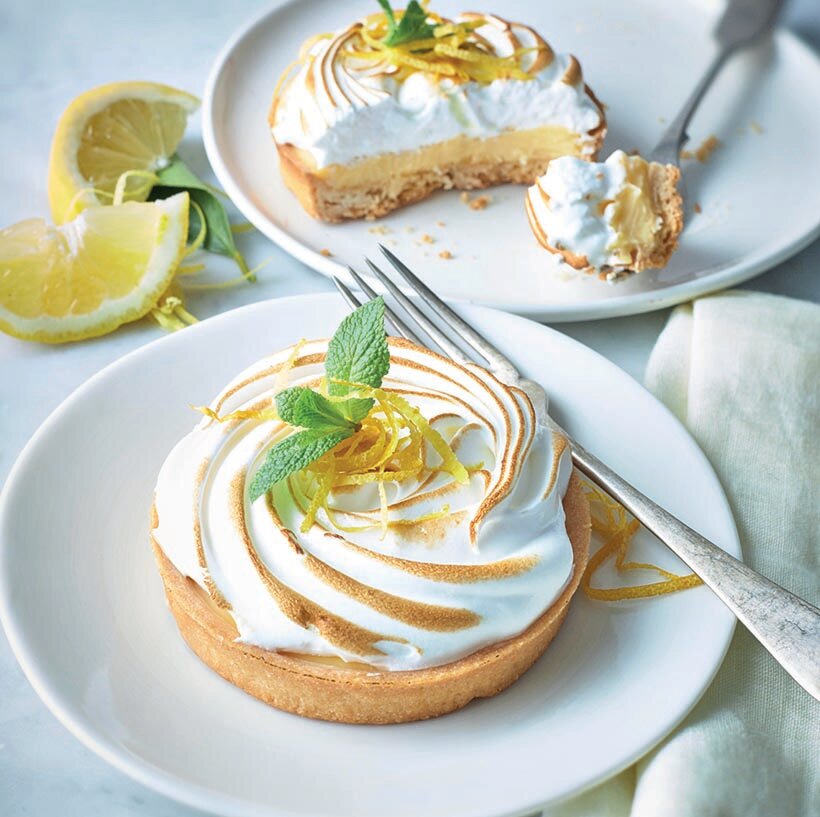
The appetite for novelty has not sidelined comforting childhood tastes such as sticky toffee pudding and jam roly poly, notes Heather Pullin, product development technologist at Frank Dale owner Finedale Foods, which offers a range of mini classic cakes, Victoria sponges and strawberry scones. Meanwhile, other golden oldies are being repurposed. As Bicknell reports: “We’re seeing biscuit brands like Lotus and Jammie Dodgers being used in mash-up desserts and bakes – from brownies, through to crumbles and ice-creams.”
Luxury doughnuts – now enjoyed at least once a week as a treat or dessert by one in four Europeans – are high-profit products that can be made from relatively cheap ingredients to help offset rising living and ingredient costs, adds Rob Owen, executive development chef at Creed, whose new ready-made ball doughnuts can be hand-finished by kitchen staff with their own fillings and toppings.
“Caterers can take inspiration from trending flavours being served in some of the most revered dining establishments in the UK,” suggests Owen. “From Fergus Henderson’s iconic St John lemon curd doughnuts to the Chiltern Firehouse’s crab donuts invented by Nuno Mendes.”
It’s crunch time
Danish and French pastries are increasingly popular snack, brunch and lunch options and croissants now account for 15% of all out-of-home breakfast occasions. Quality is a key consideration, says Samantha Winsor, marketing manager at Lantmännen Unibake. It makes its Schulstad Bakery Solutions croissants from real butter and 24 layers of flaky pastry, in all-butter, chocolate and almond variants.
As viennoiserie lovers are a loyal bunch – 81% of consumers treat themselves to a French or Danish pastry at least once a month – cross-selling, meal deals with drinks and seasonally-themed pastries can, adds Winsor, help boost their purchase frequency while tempting new devotees.
Traditional, artisanal baking methods combine with unique and natural flavours and ingredients in the collection of mini Viennese pastries developed by French bakery manufacturer Bridor with pastry chef Pierre Hermé, including pain au chocolate with Madagascan chocolate, almond and pistachio, almond and lemon croissants and apple and Ceylon cinnamon triangles. Macarons created with French pâtisserie house Maison Lenôtre are filled with buttercream made from Charentes Poitou PDO butter, fruit compote or whipped ganache.
“Laminated pâtisserie products, such as cronuts, New York rolls [a circular, topped croissant] and choux buns continue to be developed, to push the boundaries of what consumers expect from a fine pastry,” adds Briault. An example is Maple from Canada’s crunchy, textured, whisky-laced recipe for maple choux cranachan with toasted oat and barley ice-cream, created by Peter McKenna, chef co-owner of Glasgow’s Gannet restaurant.
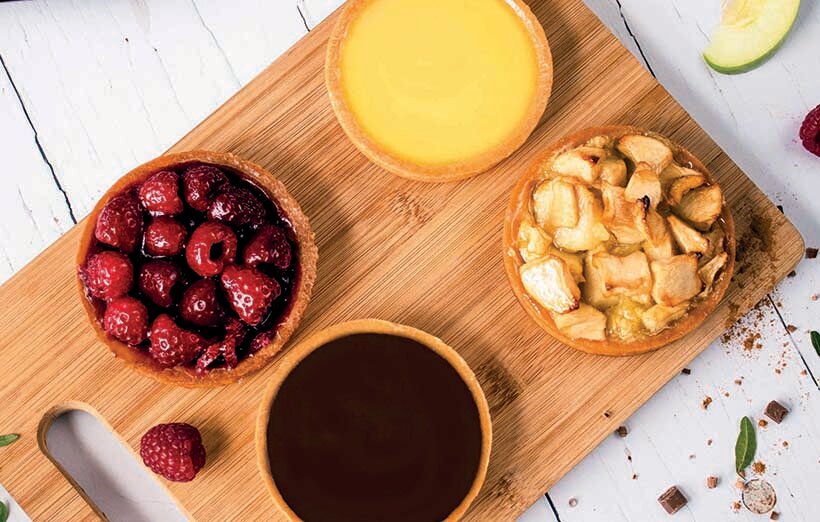
Sweet and savoury
Chocolate continues to evolve and Swiss specialist Callebaut claims to have reinvented the genre with its second-generation chocolate (see panel). It also produces ruby chocolate, along with blonde (caramelised white) chocolate, although the challenge of finding bake-stable dairy and vegan versions is delaying their spread across menus, suggests Glencross. She also finds white chocolate desserts such as blondies growing in popularity.
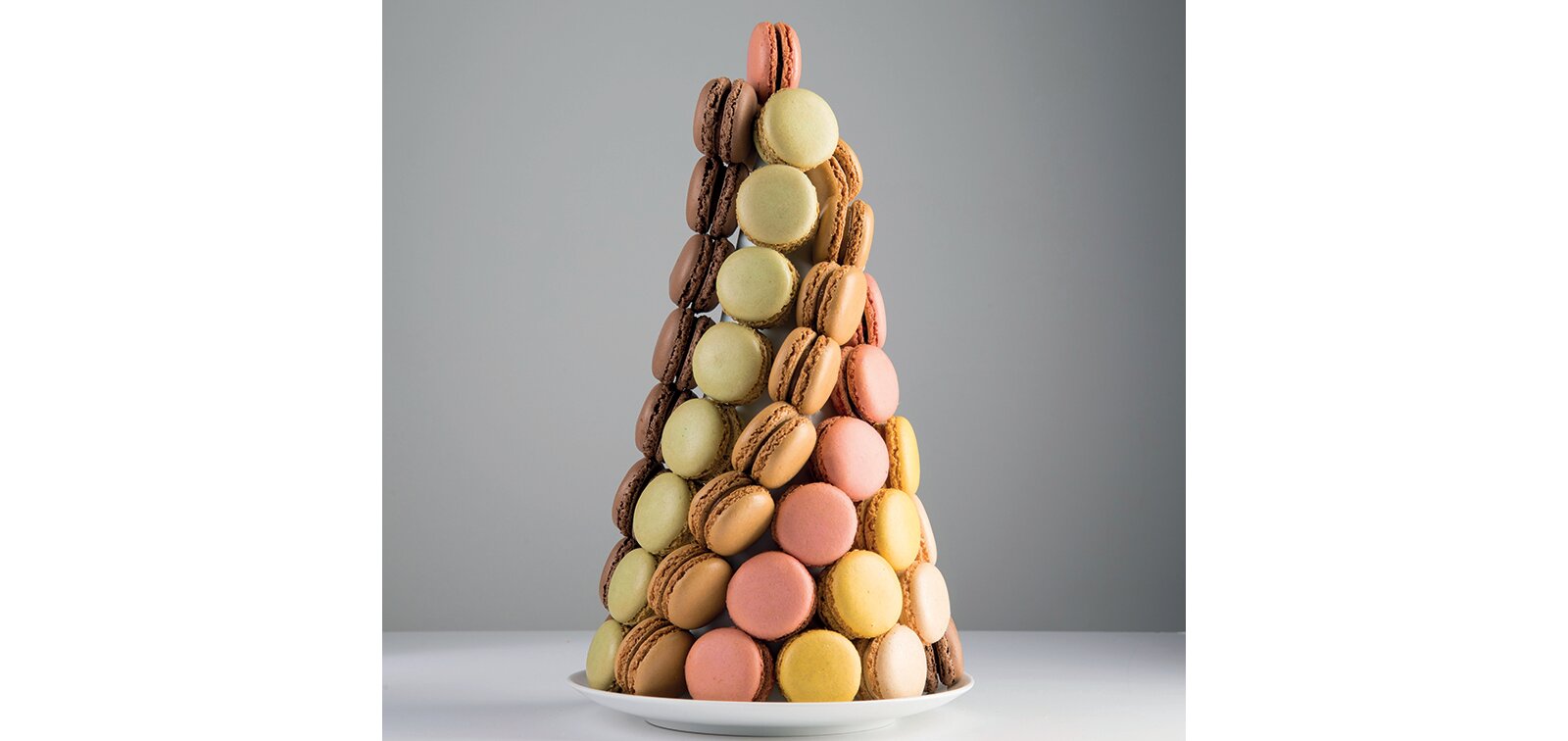
Health demands, depth of flavour and added mouthfeel and texture are driving a shift towards pairing chocolate with herby, spicy and savoury tastes, such as rosemary, cayenne, chilli, tahini, sea salt, chai and Earl Grey tea, says Glencross. Curry, mango and punchy flavours such as yuzu are also finding favour, adds Briault, who predicts that amaranth is the one to watch in 2023. Its nutty, gluten-free grains can be used as a flour or the grains can be popped for texture and the sweetish leaves can be added to pastry fillings.
“American flavours continue to be popular, for example s’mores, cookie dough and Oreo,” adds Pullin. “As are cocktail or alcohol-inspired products with flavours like negroni or espresso martini.”
Macarons remain “the darlings of the pâtisserie world” with more than nine million posts on Instagram alone, observes Marie-Emmanuelle Chessé, international development project manager at frozen French pâtisserie supplier Tipiak. They offer a perfect route to tap into the burgeoning café gourmand market with on-trend flavours, agrees Matthew Grenter, foodservice sales manager at Brioche Pasquier, whose freeze-thaw macarons come in fig and poppy seed, lemon curd and chocolate gianduja flavours, as well as classics such as such as raspberry, pistachio and vanilla.
“With their pretty pastel colours, they make an alluring display when shaped into an elegant tower,” suggests Chessé. “Macaron towers are fairly straightforward to make using a polystyrene cone and toothpicks.” Tipiak’s gluten-free, freeze-thaw macarons have a higher ground almond to sugar ratio, so are less brittle and easier to attach.
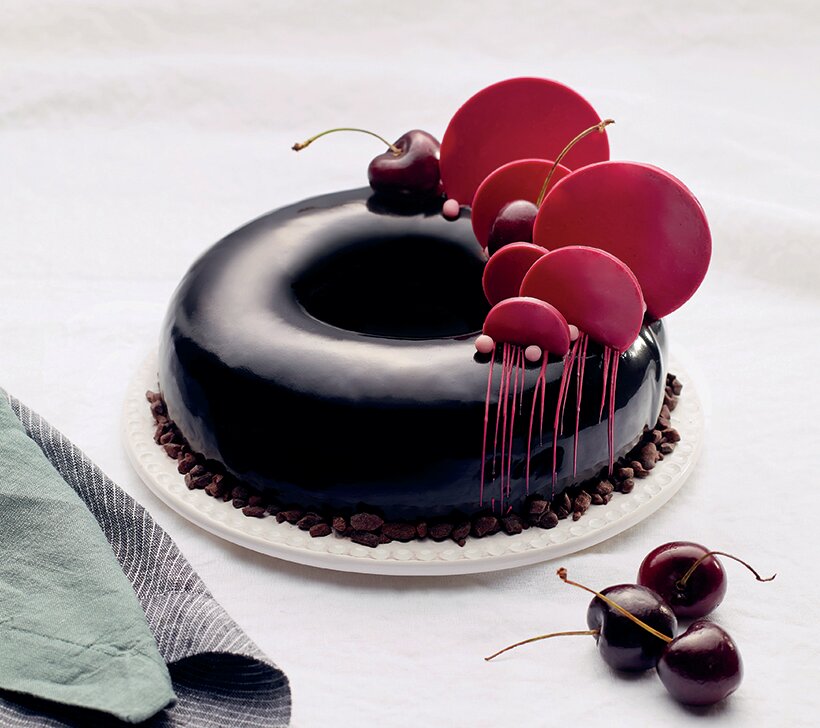
“With social media playing an important role in hospitality, Instagrammable desserts are high on the priority list for many customers,” concludes Grenter. For instance, he suggests social media videos of the moment a spoon cracks the crispy topping on Brioche Pasquier’s frozen lemon meringue tartelette or blowtorching the crème brulée tartelette.
“Encourage customers to take pictures and to tag in your restaurant,” he advises. “Make sure your Instagram tag can be seen clearly on the menu and build customer relationships by complimenting and re-posting images.”
Free from without compromise
“Plant based and free-from foods are still big news as chefs look to meet consumer demand for pâtisserie products that deliver on indulgence and are ‘better for you’ too,” says Briault.
“Chefs are experimenting with new ways to replace the mouthfeel of butter, the protein of eggs, refined sugar and the gluten in flour, without compromising on the format and flavour of the finished product or dish.”
Glencross agrees: “We are seeing lots of innovative ingredient usage to replace gluten, dairy, eggs and, of course, an ever-growing increase in the number of vegan pastries on offer. This means lots of technical challenges with many chefs turning to readymade mixes which are already vegan or free-from as a basis for their pâtisserie products.”
A new contender is Be Better butter, designed for pastry work by award-winning pastry chef Marike van Beurden. It is made from plant oils such as shea butter, coconut, sunflower and rapeseed, and van Beuden claims its neutral flavour is better than butter in allowing the pure flavours of pâtisserie products to take centre stage.
“With Be Better, you save 79% carbon, use 86%-97% less water and create zero harm to animals or the rainforest,” she explains.
“In a country where one in five people are now flexitarians, bakers will potentially miss out if they don’t cater for this new generation of conscious consumer.”
The next generation
Swiss chocolate supplier Callebaut unveiled a chocolate last October that it says meets the growing trend for “mindful indulgence”.
“After decades of research, we were able to introduce the second generation of chocolate in 2022, 140-plus years after the introduction of the first generation – chocolate that by design puts cocoa first, sugar last, with the simplest label possible,” says global vice-president of marketing Bas Smit.
It contains just cocoa, sugar and dairy, with 60%-80% more cocoa and 50% less sugar than 80% of the world’s chocolate. The industry average is six to nine ingredients and cocoa content from 30%-50%.
The chocolate is the result of farming, fermentation and roasting techniques with the aid of sensory technologies developed with Jacobs University in Bremen, Germany.
Callebaut expects its next-generation chocolate to appear in brands’ new confectionery, bakery, pastry, dessert and ice-cream creations over the next 12 to 18 months.
Suppliers
Barry Callebaut www.callebaut.com/en-OC/homepage
Be Better bebettermyfriend.com
Bridor www.bridor.com/en-uk
Brioche Pasquier www.pasquier.fr/en_uk/foodservice
Creed www.creedfoodservice.co.uk/content/doughnut-delights
Dawn www.dawnfoods.com/uk
Finedale Foods/Frank Dales Foods www.frankdalefoods.co.uk
Lantmännen Unibake UK www.lantmannen-unibake.co.uk
Maple from Canada www.maplefromcanada.co.uk
Tipiak www.tipiakfoodservice.co.uk


















